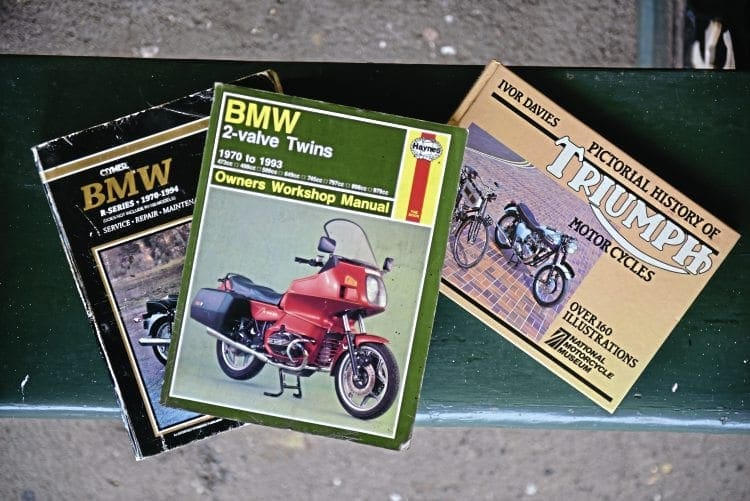This month, Matt has been comparing the US Clymer manuals with the British Haynes variety. Did one shine over the other? And to break the boxer monotony, we look at Ivor Davies’ Triumph book.
BMW workshop manual vs Clymer BMW workshop manual
While I have balanced carbs, serviced engines and repaired them since a young whippersnapper, it’s only been possible through what’s been picked up from watching my elders and often, betters. So, with no training and an ‘iffy’ CV, a workshop manual helps no end to bring confidence to a job.
John Haynes wrote manuals for more than 1000 different cars and bikes, selling more than 200 million books. His passion for cars led to the Haynes Motor Museum in Somerset, which is always worthy of a visit.
Haynes manuals have always been the go-to for UK shed dwellers like myself, and while the brand has often suffered sarcastic abuse for overly explaining really easy jobs, yet skimming over the tricky ones (with the term ‘reassembly is the reverse of removal’), the torque settings, measurements and clearances have also been essential.
The US has always had Clymer manuals. Floyd Clymer was a bike enthusiast, dealer and racer, and even tried with the Clymer Indians and Velocettes to start his own bike brand. Unfortunately, it came to a halt after he died in 1970.
I borrowed one of each to help understand the R100 that currently rules my life. Neither are current editions, but have all I need in them. The Clymer looks the most impressive, being more than twice as thick as the Haynes version.
Also it has less sarcasm attached when talking to others, which is probably down to the fact that less have used them, being American.
As both manuals offer advice on a number of the 2-valve boxer models, they both have to try and simplify the information; yet the Haynes manual manages this in a much clearer way.

It also, to myself at least, is more obviously laid out, with specs and tolerances at the front of each chapter, which is quicker and easier to find than the Clymer, which has it at the end.
Having said all that, the stepped chapters marked clearly on the side of the pages in the Clymer manuals make life simpler, as do the explanations at the beginning of each chapter. Clymer also must take credit for more photographs, and quite simply more words.
Though, again being American, it carries an awful lot of precautions at every stage, too. Oh, what a world of litigation.
Worryingly, the clearances and adjustments differ between each manual. This is undoubtedly down to the Clymer having its information from BMW USA and Haynes from BMW UK.
And with many old bikes having come from the USA nowadays, this may actually be useful. But then it could also be down to different petrol, or even altitude.
Would I recommend one or the other? No, I would look for both. For the specs, for the fact that one job may be better described in one than the other, or for a different photograph that helps. But also if you spill your coffee on one, work can still progress…
BMW workshop manual
■ £21.50
■ motobins.co.uk motorworks.co.uk
Clymer BMW workshop manual
■ £34
■ motorworks.co.uk motobins.co.uk
Read more Letters, Opinion, News and Features online at www.classicbikeguide.com and in the October 2020 issue of Classic Bike Guide – on sale now!




